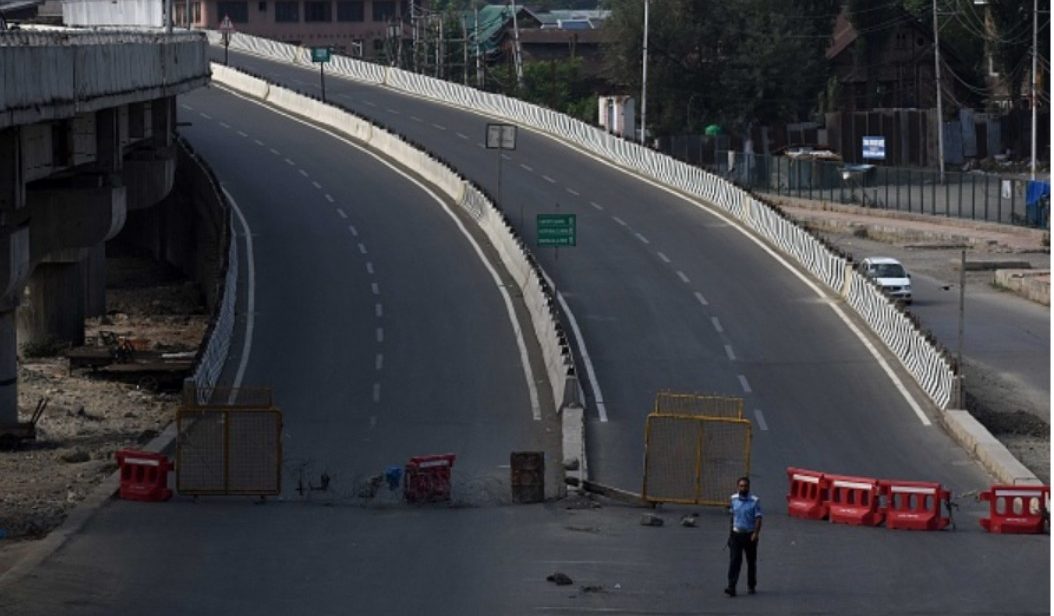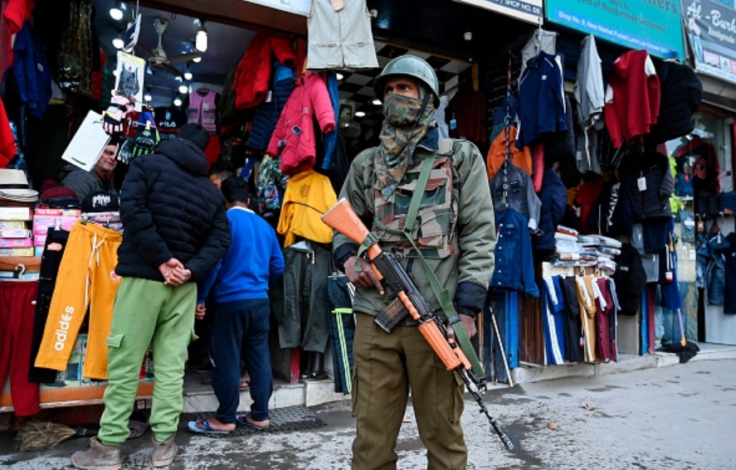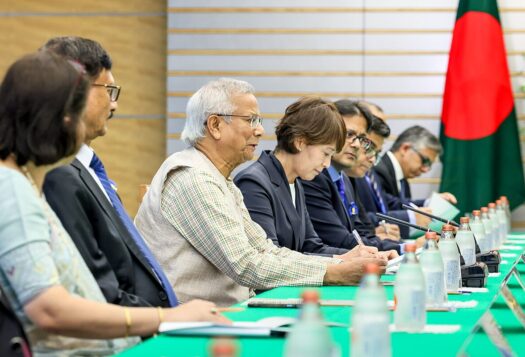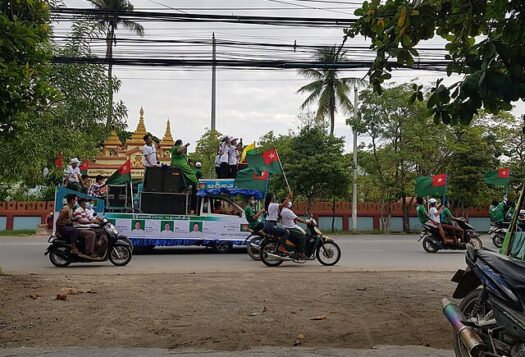
On August 5, 2020, despite the surge of coronavirus cases in India, Indian Prime Minister Narendra Modi laid the foundation stone for a grand temple to the Hindu god Ram in Ayodhya where a Mughal-era mosque once stood. He equated this day with India’s Independence Day, August 15, 1947. While Modi’s presence at the site was a violation of constitutional ideals, his comparison undermined the legacy of the Indian independence movement that was inclusive and secular in character. Many viewed the ceremony as a formal cornerstone laid for the “Hindu Rashtra (nation),” with a number of liberal Indian scholars writing obituaries for Indian secularism.
August 5 also marked the first anniversary of the abrogation of the semi-autonomous status of Jammu and Kashmir—the only Muslim majority state in India—this move has also been viewed as part of the larger socio-political project of Modi’s Bharatiya Janata Party (BJP) that seeks to transform India’s national identity from a secular country to a Hindu nation. Union Home Minister Amit Shah has argued that the semi-autonomous status of the former state was a hurdle in the way of peace, economic development, and democracy in the region. However, since the abrogation of the region’s semi-autonomous status, the situation has worsened. One year on, and several political leaders including the former Chief Minister of Kashmir, Mehbooba Mufti, remain in detention. While early reports indicated that militancy in the Valley had decreased after August 5, many have been skeptical of these numbers showing the full picture as the security and political clampdowns intensify conditions and grievances that have historically contributed to militancy. The local press—which is in a state of numbness for the last one year—remains muted. Any intellectual response or dissent to the Modi government’s August 5 decisions is deemed as rebellion. Amid the shrunken political space, the back-to-back lockdowns in Kashmir have ruined the local economy and increased unemployment.
Even though a fragment of the Jammu region and Ladakh population had initially celebrated the central government’s move last year, anxieties over demographic changes, loss of jobs and economic resources, suppression of political thought, and erasure of cultural identity have intensified across all three regions—leading to further disillusionment and unrest. Without an immediate reconsideration of the government’s policy in Jammu and Kashmir, India’s secular foundation will be marred permanently.
Political Suppression in Kashmir
Political suppression in the highly volatile region is at an all-time high. A recent report by the Forum for Human Rights in Jammu and Kashmir underscored the consequences of the government’s actions in Kashmir since August 2019. The report called for the withdrawal of charges and subsequent release of all detained juveniles and initiation of inquiries against armed forces. It further demanded the withdrawal of Unlawful Activities Prevention Act (UAPA) and Public Safety Act (PSA)—which undermine accountability, transparency, and basic human rights of journalists and political activists by circumventing the criminal justice system. However, this report proved to be a cry in the dark.
A year after the Modi government brought the restive region under its direct control, there is no visible action to boost the local economy and tackle unemployment.
The Jammu and Kashmir High Court Bar Association recently wrote to the Chief Justice of India that ninety nine percent of the habeas corpus petitions filed with the High Court since August last year have remained pending. The Supreme Court of India has given delayed and evasive responses to the pleas pertaining to personal liberty and abrogation of Jammu and Kashmir’s semi-autonomous status since last year. As a mark of protest, all the principal political parties of the region, including the National Conference and the People’s Democratic Party, boycotted the swearing-in ceremony of the newly-appointed Lieutenant Governor of Jammu and Kashmir Manoj Sinha—former union minister and BJP parliamentarian who openly threatened critics of BJP.

Increasing Unemployment
The government’s efforts to politically disempower locals have taken a heavy toll on Kashmir’s economy. Since last year’s lockdown following the abrogation of Kashmir’s semi-autonomous status, Kashmir’s economy has suffered a loss of more than USD $5.3 billion, which has rendered over 500,000 people jobless across different sectors due to restricted mobility and limited access to the internet. Moreover, per media reports, businesses like sandmining have been purposely handed over to non-locals. The growing job crisis in Jammu and Kashmir is epitomized by the fact that over 500,000 job candidates, including many postgraduates, recently applied for only 8,575 lowest level-class IV government jobs. A year after the Modi government brought the restive region under its direct control, there is no visible action to boost the local economy and tackle unemployment.
Erasure of Culture in Kashmir
The past year has also seen the central government’s attempts at erasing political symbols that signify Kashmir’s distinct identity. After the government discarded the state flag, police awards titled Sher-e-Kashmir, an epithet used for National Conference founder Sheikh Muhammad Abdullah, were also dropped. The birthday of late Abdullah and the July 13 state holiday marking the massacre of Kashmiri Muslims in 1931 were removed from the Jammu and Kashmir’s latest official calendar. There is growing apprehension that Urdu, the official language of the erstwhile state, may be disowned by the government due to its absence from the Jammu and Kashmir Reorganisation Act—the Act that divides the former state of Jammu and Kashmir into Union Territories of Jammu and Kashmir and Ladakh. Government advertisements in local dailies employ Hindi language and the names of several local landmarks have been changed from Urdu to Hindi.
All these steps are seemingly being taken by the government to strengthen Prime Minister Modi’s image as a “strong Hindu leader” to reap electoral dividends in the rest of the country. However, this cultural onslaught is only adding to the alienation and anti-India sentiment in Kashmir.
The new socio-political engineering project of the Modi government has been pushing Jammu and Kashmir into deeper turmoil. New Delhi’s “Project Kashmir” not only affects the people of the region, but also plays a role in reshaping India’s federal and secular character.
A New Political Reality
The political clampdown has provided a fertile ground for separatism to deepen in Kashmir. Even though the separatist leaders remain in confinement, there has been an uptick in militancy-related violence since 2020. Consequently, the suppression of political space has brought political parties together. In an effort to put up a collective resistance, these parties unanimously resolved to “fight for restoration of the special status of Jammu and Kashmir,” emphasizing that the measures taken were “spitefully short-sighted” and “grossly unconstitutional.” In the absence of political freedom, former Indian Administrative Service officer, Shah Faesal, who founded Jammu and Kashmir’s People’s Movement months before the abrogation of the region’s special status, quit politics following his release from detention. Faesal, in his interviews, said that Kashmir faced a “new political reality,” and he did not want to take Kashmiris down the garden path.
The new socio-political engineering project of the Modi government has been pushing Jammu and Kashmir into deeper turmoil. New Delhi’s “Project Kashmir” not only affects the people of the region, but also plays a role in reshaping India’s federal and secular character. In the changed political scenario—even if political processes resume, statehood status is restored, and assembly elections are held in the near future—the restoration of peoples’ trust in Indian democracy will remain the biggest challenge that the Indian State has faced in Jammu and Kashmir since 1947.
***
Image 1: Faisal Khan/Anadolu Agency via Getty Images
Image 2: TAUSEEF MUSTAFA/AFP via Getty Images


